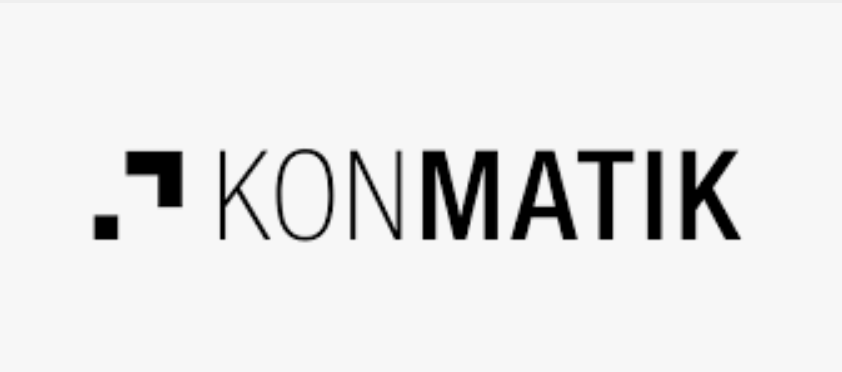More successful and more cost-effective projects: KONMATIK GmbH uses the information model for the benefit of its customers


Konmatik brings people, effective technologies and established procedures together to move companies forward.
At most, her customers are surprised because they do not know the information model. Lakhena Leng, founder and Managing Director of KONMATIK GmbH, has worked with Stefan Berner's information model for years. She uses it in all of her customer projects, whether they involve digitalisation or organisational development. It is now unthinkable for her not to model the customer's information at the start of a project. The advantages and benefits of the method predominate, which is why the information model is an integral part of her consulting services.
In search of a better model
Leng was already modelling information when she was not yet familiar with Stefan Berner and his method. “I was always looking for solutions on how I could model better,” says Leng about the early days. When developing digitalisation strategies and in organisational consulting, she came up against the limits of conventional models. Her search eventually led her to Berner's book Information Modelling (2016, vdf Hochschulverlag), which had been published a few years earlier. The model encouraged her to analyse and model information before data and processes. This is because information, unlike processes in companies, for example, remains stable over time. Recording it forms the basis for everything else.
The information model briefly explained
Companies define, document and visualise their knowledge using the information model. The model is based on language and defines the most important terms and their relationships independently of data and processes. The information model provides a company with a common language everyone can understand. Misunderstandings between business and IT or other departments are, therefore, a thing of the past.
The model consists of terms (entities) with attributes, their definitions, and the relationships between the terms using verbs. It also includes a few graphical elements, for example, to show the cardinality and optionality of the relationships. It fulfils the conditions of a relational data model but excludes IT aspects.
Projects with the information model are more successful than those without
When Leng discovered the information model, she was already documenting customers' information at her former employer. She later taught the model to her students as a freelance lecturer in business informatics at the M21 campus of Mittweida University of Applied Sciences. Five years ago, the graduate engineer in information technology then founded her own company, in which the information model has become indispensable.
With KONMATIK, Leng and her employees advise small and medium-sized companies. The company covers everything from digitalisation to organisational development because Leng sees organisation, processes, and IT as a single unit. That is why it does not matter whether customer projects are digitalisation initiatives or pure organisational development – the information model is always part of the offering.
“Projects with the information model are more successful than those without. And they are more cost-effective for my customers.“
— Lakhena Leng, Managing Director of KONMATIK GmbH
“My customers are curious and are happy to work out the basic information together,” emphasises Leng. There is hardly any resistance, even if it may seem trivial to someone to clarify basic terms for the model. This is because any doubts vanish into thin air at the latest when another person in the workshop round announces their completely different understanding of the definition of the term. “It may sound trivial, but the terms customer, lead, prospective customer, partner and supplier mean different things to different employees,” explains Leng. When it comes to equally trivial and supposedly straightforward things such as product and article, it becomes clear that, on closer inspection, many things that are central to a company become unclear. The information model brings transparency to the company because terms and their interrelationships are clarified. “Projects with the information model are more successful than those without. And they are more cost-effective for my customers.”
The modelling effort pays off
Projects are more cost-effective because customers use the information model to develop and document a clear picture of the organisation and a shared understanding of the relevant information right from the start. The model depicts the company and organisational reality in its complexity in an understandable way; it makes the invisible visible. For Leng, asking “stupid” or trivial questions as a moderator at the start of a workshop is not a problem but a necessity. This can clarify what would otherwise lead to misunderstandings and a repeated need for clarification, i.e. more time, without a model – especially between the specialist managers and the IT department.
“The information model creates a level for discussion between the specialist managers and IT.”
— Lakhena Leng
Documented knowledge as a competitive advantage
For Leng, information is the centrepiece of a company. It is everywhere, hidden in the smallest of things and hardly manageable. Leng uses the information model to visualise the diversity of information and the relationships between them. In this way, knowledge in the company becomes an asset in the form of the model if it is established like processes.
Leng emphasises that companies have a competitive advantage if they consolidate and document their information. How else can they keep up in the rapidly changing IT world? Gathering and negotiating the necessary information anew for every project or initiative, such as the introduction of AI, is not an efficient solution. The information model makes the company more agile for changes because it provides stable information for any development.
“Most of our customers do not yet maintain the developed information model in the way that would be possible and sensible in the long term,” admits Leng. However, when it comes to data quality management, as with one of her customers, continuous model maintenance becomes essential. And when it comes to business intelligence, Leng sees potential in the information model as a “game changer”.
The future of the information model at KONMATIK
Meanwhile, Leng and two of her employees were trained in the information model by Carl Simbruner – Stefan Berner was also there. Leng admits that she does not follow Berner's method consistently. She chooses broader designations for the relationships between the entities than required. This is a pragmatic solution because it serves the purpose at the moment of modelling. Reworking by her or the customer is always possible. She also works with management and specialist managers who have certain expectations regarding the speed of the project.
“Recording the information in an Excel spreadsheet is a nightmare and drives people crazy – as seen with one customer. Information must be well visualised to remain understandable, as in the information model.”
— Lakhena Leng
In the future, Leng wants to develop a standard for SMEs to have a basic framework. This framework, which will look different depending on the industry, should make work easier for her employees. The framework must be tailored to the customer in the project, as terms, definitions and relationships are customer-specific. Leng wants to develop a modelling tool for this purpose. Conventional modelling tools do not currently meet her requirements in terms of functionality and aesthetics. And what is still outstanding: Leng has commissioned her employees to develop the KONMATIK information model. After all, she wants to know what the foundation of her company looks like. “I still have to check the model when things are a little quieter,” she says and laughs.
Would you like to learn more about the information model and its benefits for companies? Contact Stefan Berner at stb@foryouandyourcustomers.com and take a look at the book on information modelling or download the white paper.
In the LinkedIn group on information cartography you will find articles by Stefan Berner and Christian Bühlmann on information modelling and cartography.
